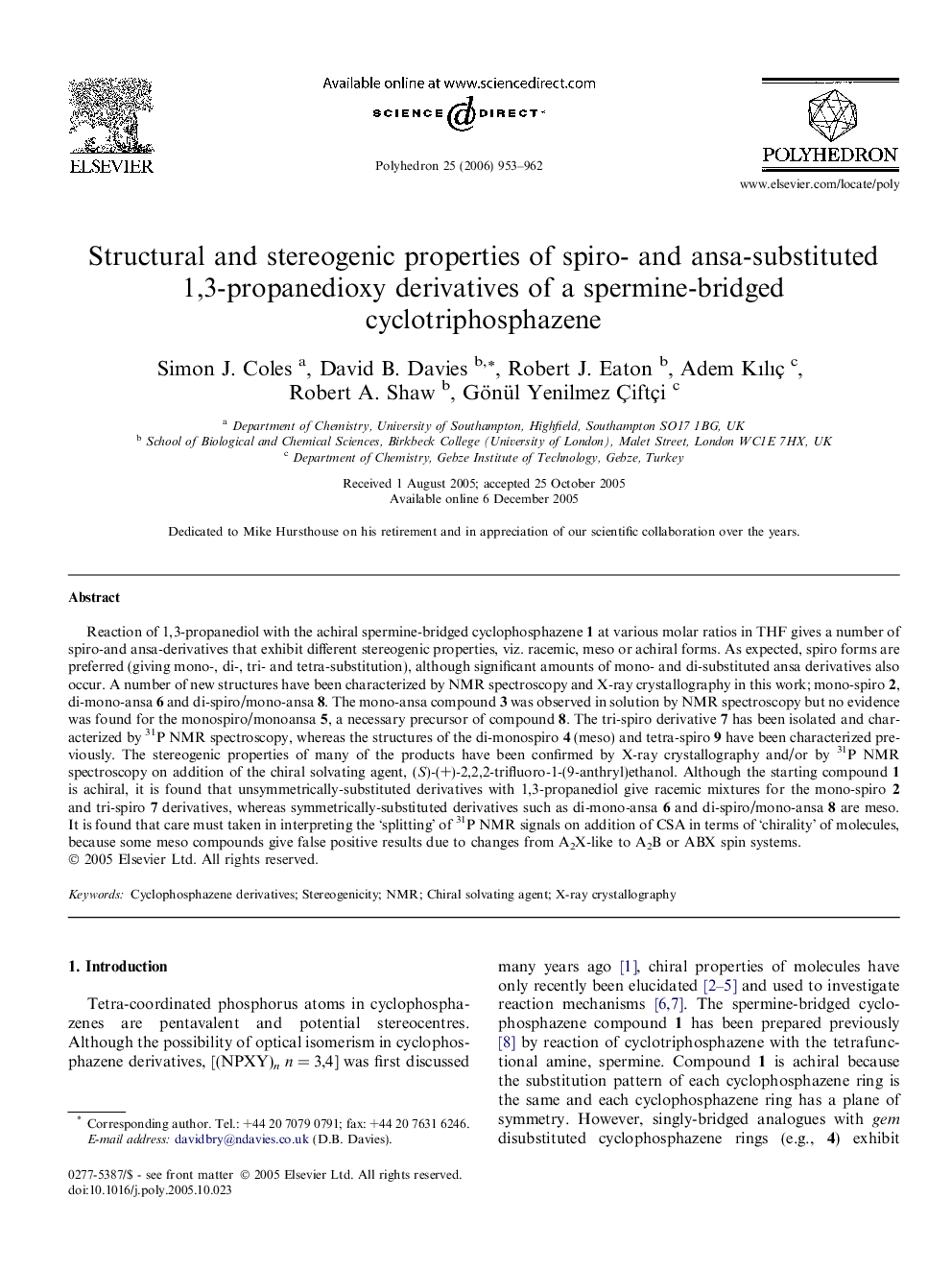| Article ID | Journal | Published Year | Pages | File Type |
|---|---|---|---|---|
| 1340897 | Polyhedron | 2006 | 10 Pages |
Reaction of 1,3-propanediol with the achiral spermine-bridged cyclophosphazene 1 at various molar ratios in THF gives a number of spiro-and ansa-derivatives that exhibit different stereogenic properties, viz. racemic, meso or achiral forms. As expected, spiro forms are preferred (giving mono-, di-, tri- and tetra-substitution), although significant amounts of mono- and di-substituted ansa derivatives also occur. A number of new structures have been characterized by NMR spectroscopy and X-ray crystallography in this work; mono-spiro 2, di-mono-ansa 6 and di-spiro/mono-ansa 8. The mono-ansa compound 3 was observed in solution by NMR spectroscopy but no evidence was found for the monospiro/monoansa 5, a necessary precursor of compound 8. The tri-spiro derivative 7 has been isolated and characterized by 31P NMR spectroscopy, whereas the structures of the di-monospiro 4 (meso) and tetra-spiro 9 have been characterized previously. The stereogenic properties of many of the products have been confirmed by X-ray crystallography and/or by 31P NMR spectroscopy on addition of the chiral solvating agent, (S)-(+)-2,2,2-trifluoro-1-(9-anthryl)ethanol. Although the starting compound 1 is achiral, it is found that unsymmetrically-substituted derivatives with 1,3-propanediol give racemic mixtures for the mono-spiro 2 and tri-spiro 7 derivatives, whereas symmetrically-substituted derivatives such as di-mono-ansa 6 and di-spiro/mono-ansa 8 are meso. It is found that care must taken in interpreting the ‘splitting’ of 31P NMR signals on addition of CSA in terms of ‘chirality’ of molecules, because some meso compounds give false positive results due to changes from A2X-like to A2B or ABX spin systems.
Graphical abstractReaction of the achiral spermine-bridged cyclotriphosphazene compound (A-Z = Cl) with 1,3-propanediol at different molar ratios in THF gives various spiro- and ansa-derivatives with different stereogenic properties, i.e., racemates for unsymmetrically-substituted derivatives and meso, diastereoisomeric or achiral forms for symmetrical substitution.Figure optionsDownload full-size imageDownload as PowerPoint slide
